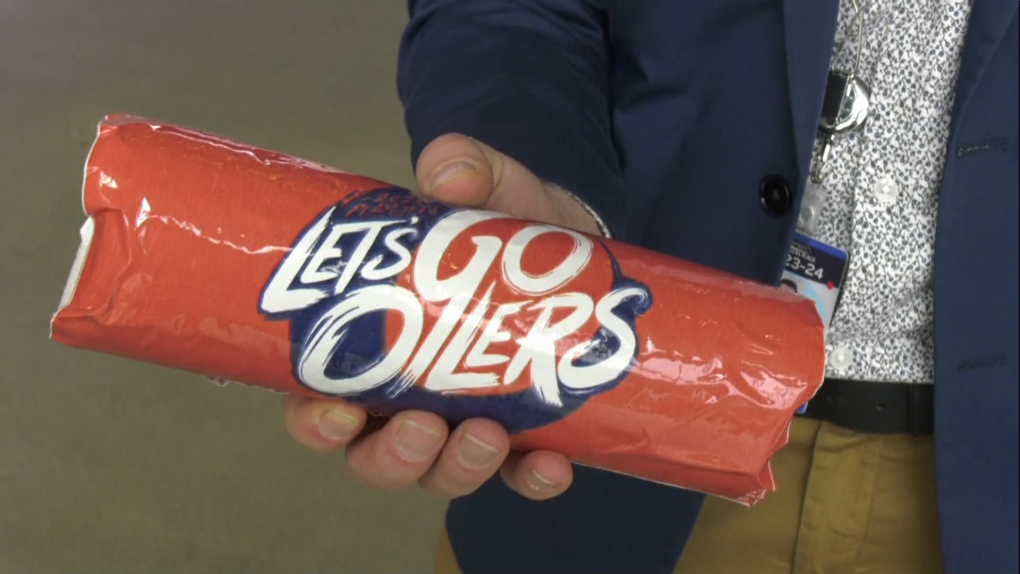Every year, from the last Friday of October to Nov. 11, Canadians fasten bright red poppy pins over their hearts as a symbol of remembrance for sacrifices made by war veterans.
This year, the tradition is 100 years old — the centennial anniversary of the adoption of the poppy campaign in Canada.
“The poppy’s connection to remembrance really grew from tragic loss, and as a story of hope and enduring gratitude,” said Steven Clark, national executive director of the Royal Canadian Legion.
Each year, the legion sees the distribution of 18 million to 20 million poppy pins.
One of the origins of Canada adopting the poppy as a remembrance symbol came largely as a result of In Flanders Fields, a poem written by Lt-Col. John McCrae of Guelph, Ont., a Canadian medical officer during the First World War.
Symbol of remembrance rooted in Thunder Bay
The famous poem reached far and wide, illustrating the tragedies and realities of the First World War.
French humanitarian Anna Guérin, inspired by McCrae’s words, created poppies made of fabric to raise funds to help rebuild regions of France torn apart by the war.
Watch and listen to our coverage live from the National War Memorial in Ottawa. Watch on CBC TV, CBC News Network, and streaming on CBC Gem or the CBC News app, beginning at 10 a.m. ET.
Guérin presented her concept to France’s allies, including the precursor to The Royal Canadian Legion, which was then called the The Great War Veterans Association.
Her concept of the poppy campaign was considered at an association convention in Thunder Bay, Ont., at the Prince Arthur Hotel, which still remains in operation.
On July 6, 1921, the resolution to adopt the poppy as the national flower of remembrance passed, and armistice day was set to be the first national poppy day that year.
“Part of the proceeds would go to support Anna Guérin’s charity and the other part of the proceeds would be used to support veterans in Canada, and they move fairly quickly,” said David Ratz, a historian and adjunct professor at Lakehead University in Thunder Bay who also co-authored Thunder Bay and the First World War, 1914- 1919 .
“There is a fair bit of support, and Anna Guérin has sort of generated a groundswell across the country, as well as the number of people in local areas who pick up the idea.”
Ratz said more than $60,000 was raised through the first poppy campaign and it was viewed as a great success.
According to the Royal Canadian Legion, over two million poppies were distributed in the first year of the campaign in Canada.
“There was such a demand that the legion ran out and had to engage different individuals to hand make poppies in Canada to supplement the supply,” Clark said.
“That speaks to the incredible support that Canada has in honouring, remembering and thanking its veterans, and that continues straight through until today.”
Growing through the years
Clark said harnessing the momentum of the campaign over the last 100 years is top of mind for the legion as it surpasses this milestone. He said the campaign will continue to strive for the “benevolent comfort and care of veterans and for the promotion of remembrance.”
“Something that will never change is the lapel poppy that you see. It may look differently, but the practice of distributing poppies for individual wear will never change because remembrance is a very personal thing.”
Clark said the legion has engaged with new ways to deliver the poppy, including through digital platforms like NFTs (non-fungible tokens) to create digital collectibles.
“So even though again, the poppy has gone through a few variations in what its appearance is, the reason the poppy is here has never changed and that remains as strong as ever, and we could not be more thankful and appreciative for Canadians in their generosity.”
Clark said the legion is also proud to work with Indigenous artists on the creation of beaded and sealskin poppies.
“Now I have to say a veteran is a veteran, and the poppy represents all veterans. But we do realize that there’s a different representation. So that’s why we engage these Indigenous artisans who have a very unique and special way of developing and presenting the remembrance poppy.”
For Shermen Patabon, creating beaded poppies each year for family and friends serves as a way of remembering the long line of veterans in his own family.
“I wear it when I dance,” Patabon said. “When we do powwow dancing, they do honour veterans with a song, so that’s probably one of the main reasons why I started.”

Patabon, from Long Lake 58 First Nation in northwestern Ontario, has been creating beaded poppies, completed with quill work and sweetgrass detailing, for over five years. He starts to make beaded poppies in October, and has a tradition of donating to the Royal Canadian Legion as well.
“My ancestors, my grandfather and uncles, what they went through to go fight for our freedoms in the war. I just think about them,” said Patabon.
Seeing others wearing poppies this time of year, especially when they’re created by him, is an indescribable feeling, he added.
“It just makes me proud.”






More Stories
‘Tremendous help’: Hundreds of new shelter spaces coming to Abbotsford – BC | Globalnews.ca
Heroic stranger braves the cold Calgary river water to rescue missing pup – Calgary | Globalnews.ca
Residents displaced by tower construction receive helping hand from Okanagan College – Okanagan | Globalnews.ca